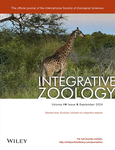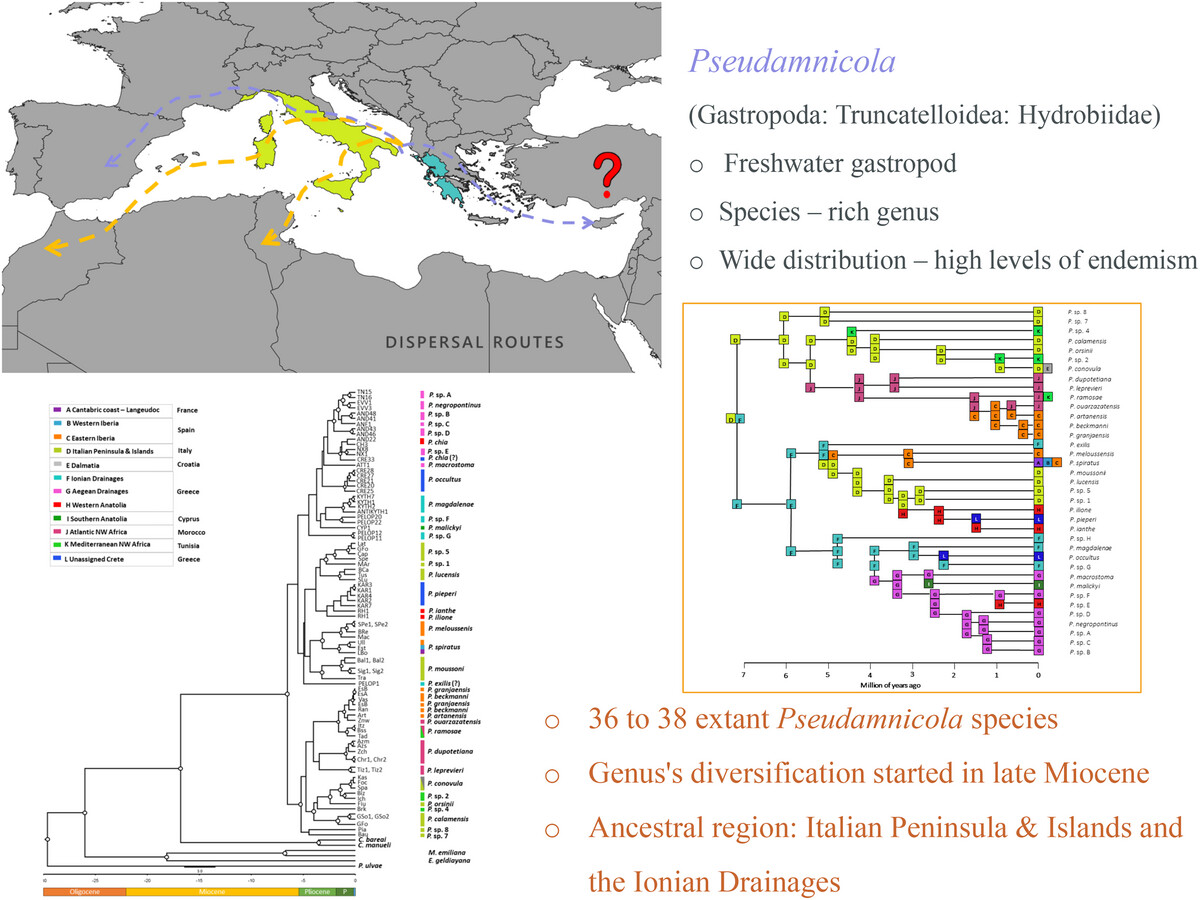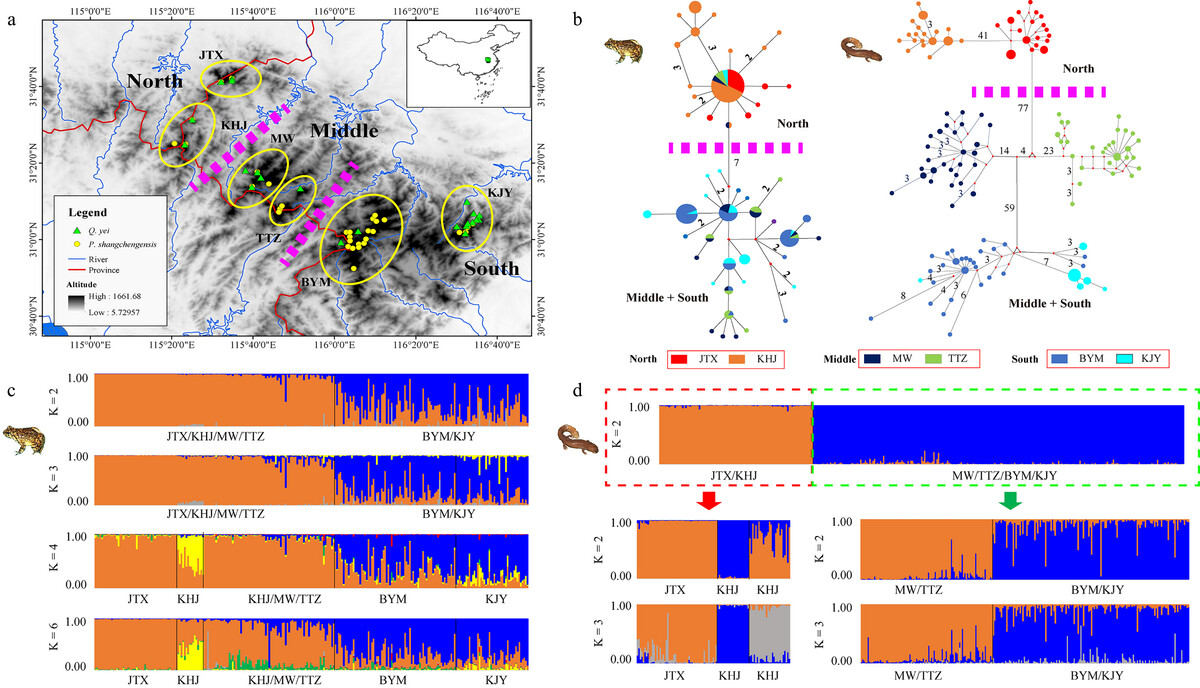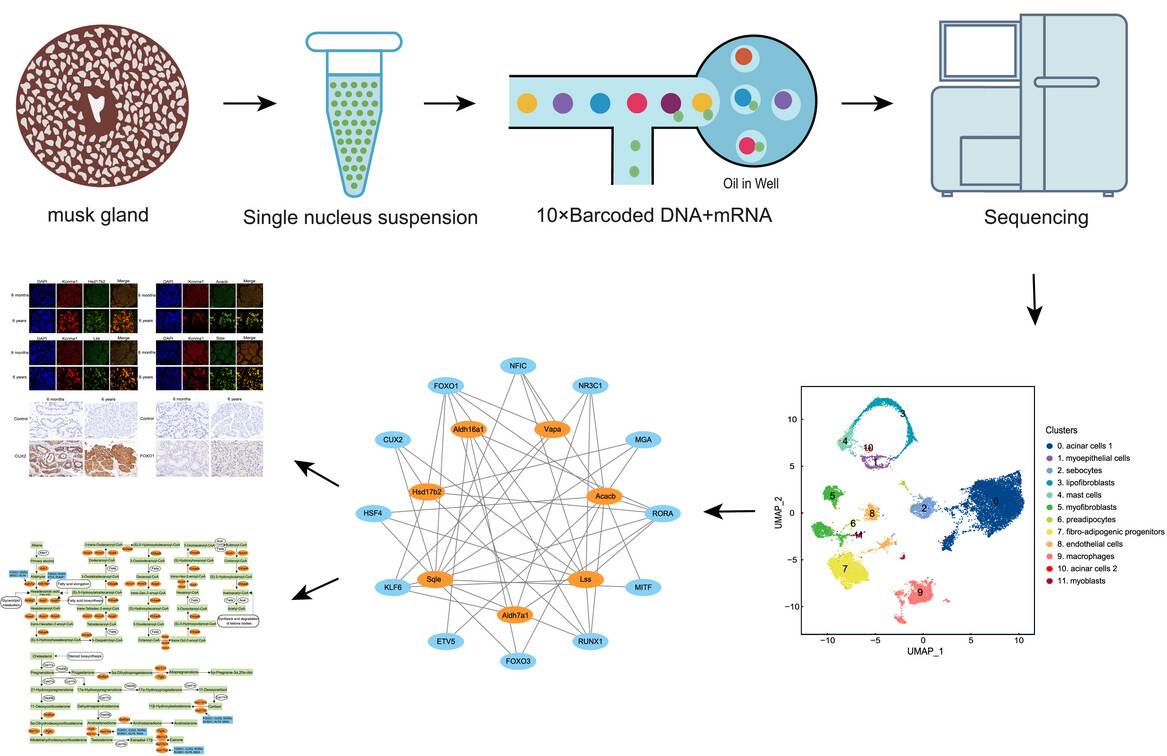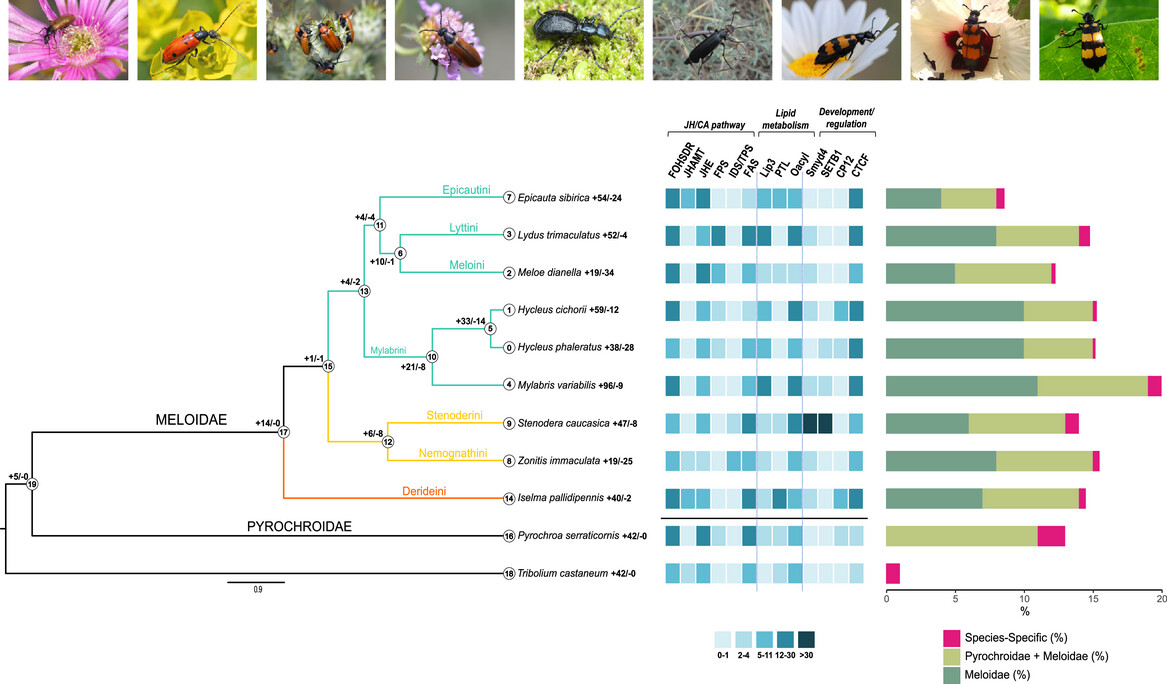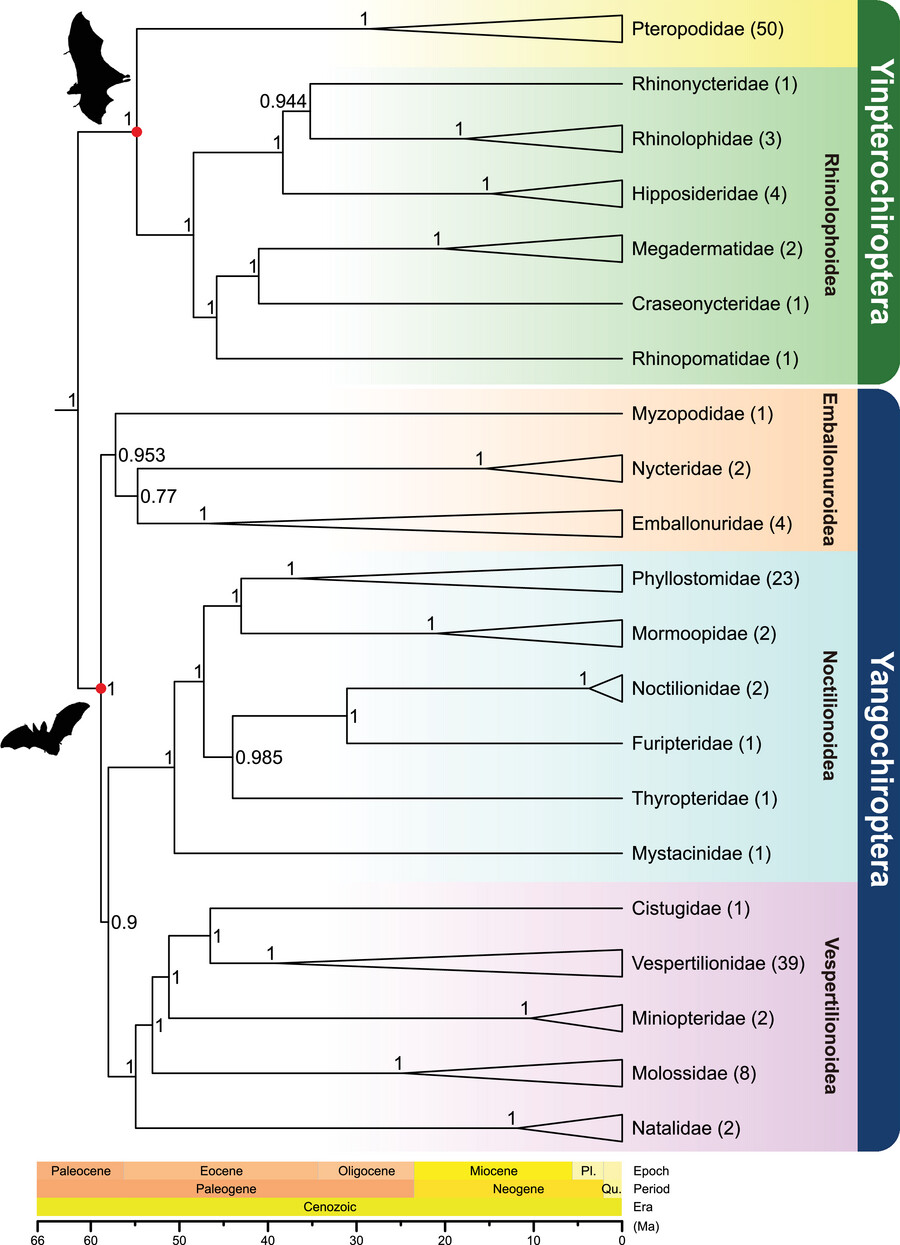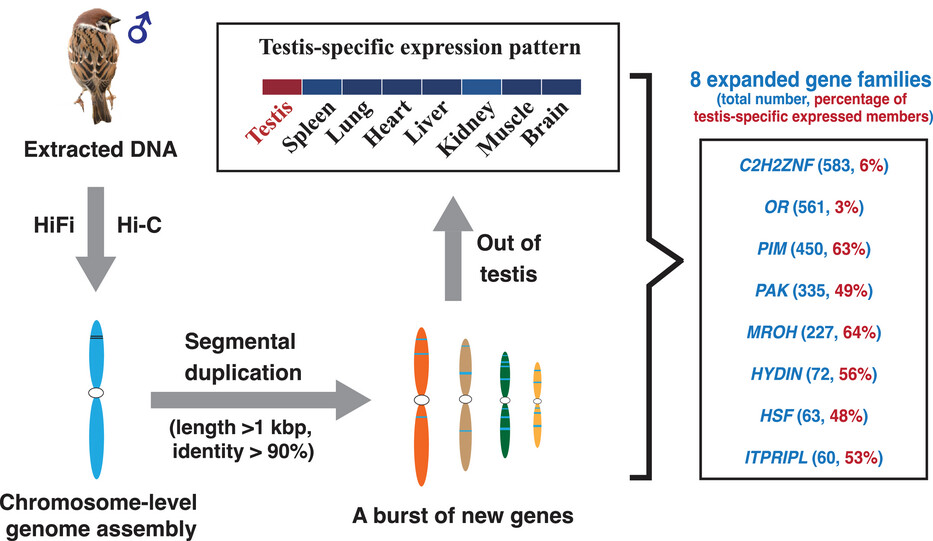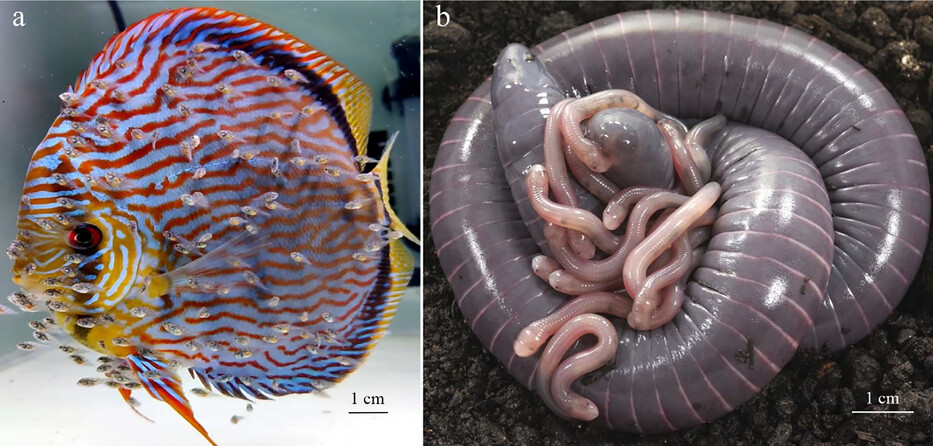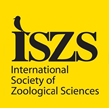Journal list menu
Export Citations
Download PDFs
ISSUE INFORMATION
Special issue: Evolution research by integrative aspects
DNA metabarcoding diet analysis in a generalist omnivore: feeding trials reveal the efficacy of extraction kits and a multi-locus approach for identifying diverse diets
- Pages: 790-806
- First Published: 31 January 2024
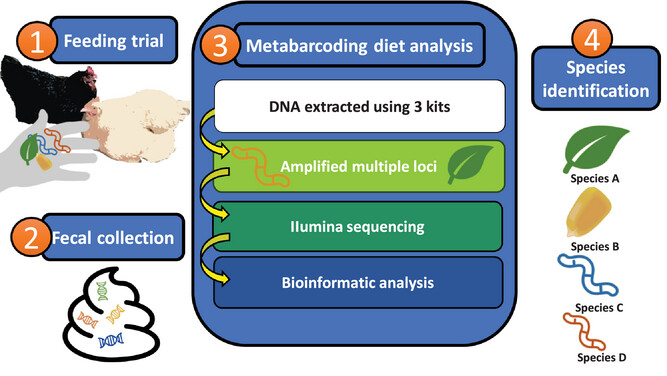
An optimized protocol can significantly affect the accuracy of DNA metabarcoding diet analysis. In this study, we conducted a feeding trial experiment by feeding known food items to chickens and collected their excreta for eight hours after feeding. The efficacy of DNA extraction kits and primer sets were assessed. The results indicated that extraction kits using bead-based homogenization positively affected the recovery proportion of fecal DNA. For insect DNA detection, two cytochrome oxidase subunit I (COI) primer sets significantly outperformed the third. For plant DNA detection, both recovery proportion and taxonomic resolution from amplifying internal transcribed spacer 2 (ITS2) were significantly higher than those from rbcL and trnL. These results display the potential variability that can be inherently present in DNA-based diet analyses and highlight the utility of experimental feeding trials in validating such approaches, particularly for omnivores with diverse diets.
Just a matter of size? Evaluating allometry and intersexual heterometry in Pagurus bernhardus using ratios and indices (Decapoda, Anomura)
- Pages: 807-823
- First Published: 20 December 2023
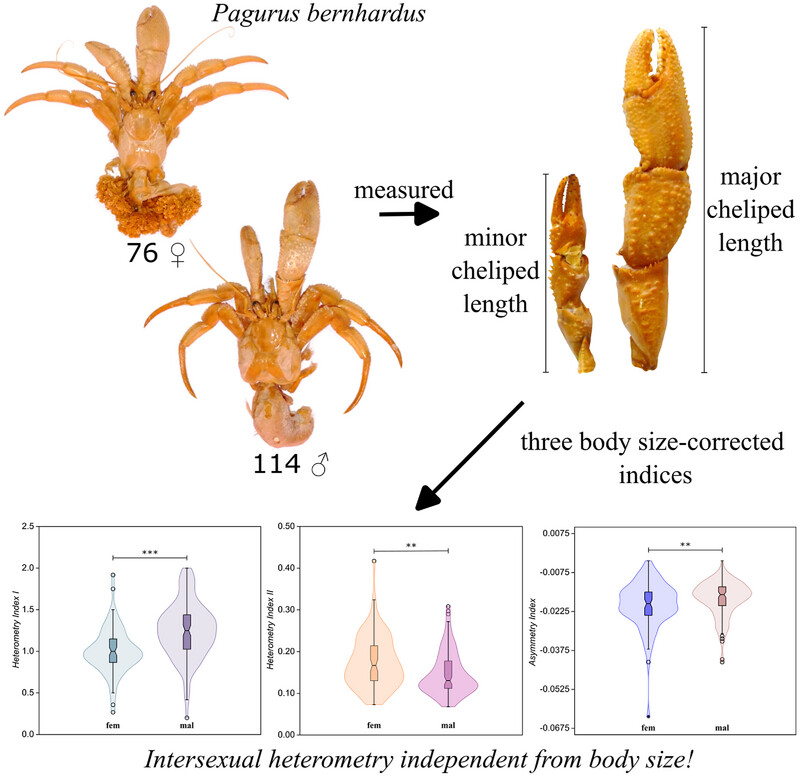
We analyzed 190 specimens of the common European hermit crab species Pagurus bernhardus to look for the heterometry between the sexes regardless of the body size. We calculated three different indices and found all to be significantly different between males and females, indicating that males have bigger major and minor chelipeds than females, even if they would be similar-sized.
Resolving phylogenetic relationships and taxonomic revision in the Pseudogastromyzon (Cypriniformes, Gastromyzonidae) genus: molecular and morphological evidence for a new genus, Labigastromyzon
- Pages: 824-845
- First Published: 12 September 2023
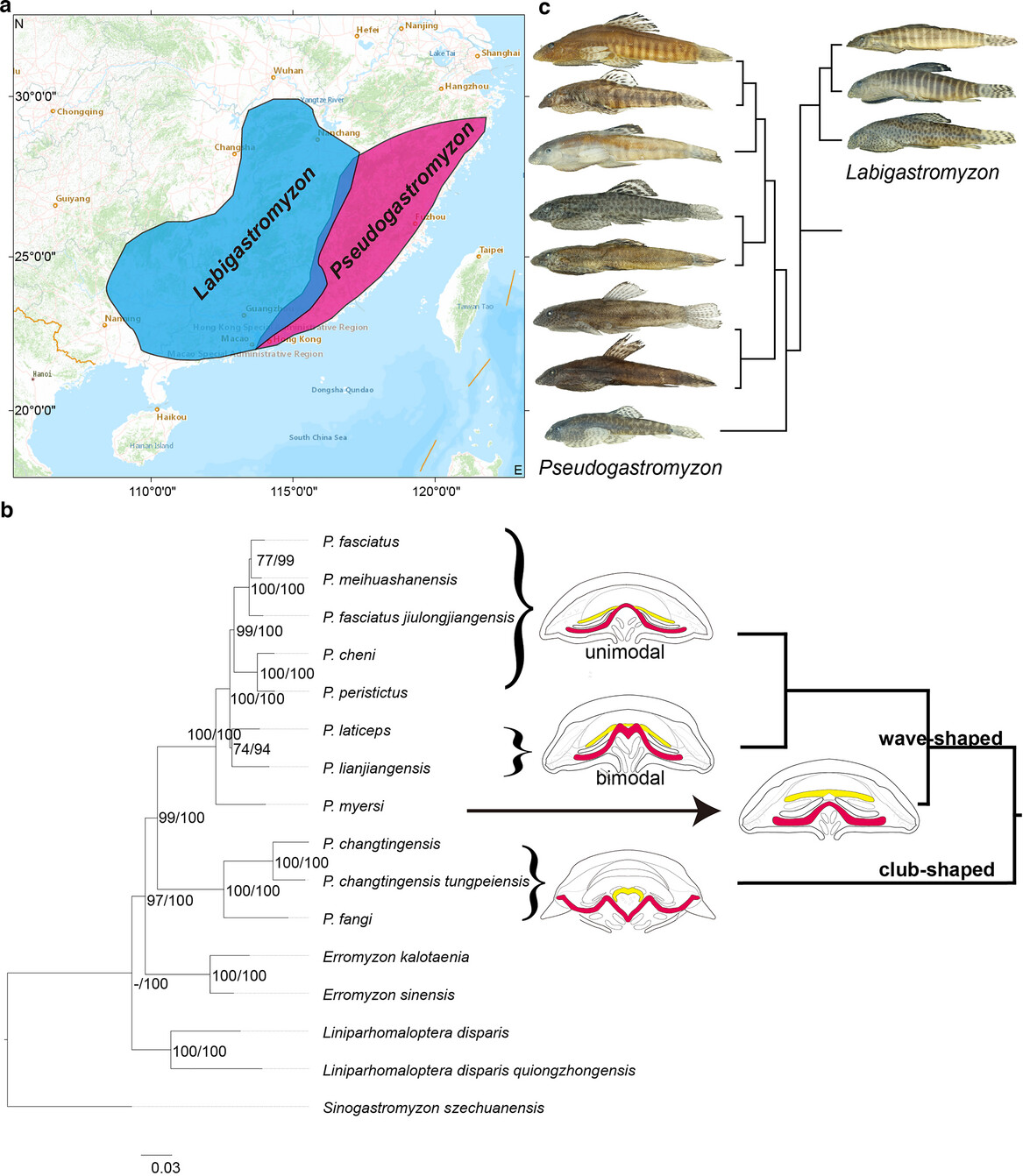
This research elucidates the marked geographical delineation between Pseudogastromyzon and Labigastromyzon genera, with a limited overlapping region. The evolution of labial structures from elementary to intricate morphologies aligns with mitochondrial genome phylogenetics. Notably, the labial adhesive apparatus in Pseudogastromyzon exhibits unimodal and bimodal morphotypes, enhancing the accuracy and efficiency of species identification within this genus.
An expanded phylogeny of the genus Pseudamnicola (Gastropoda; Truncatelloidea; Hydrobiidae) across the Mediterranean Basin
- Pages: 846-862
- First Published: 19 May 2024
Comparative phylogeography reveals dissimilar genetic differentiation patterns in two sympatric amphibian species
- Pages: 863-886
- First Published: 25 October 2023
Introduced and extinct: neglected archival specimens shed new light on the historical biogeography of an iconic avian species in the Mediterranean
- Pages: 887-897
- First Published: 12 January 2024
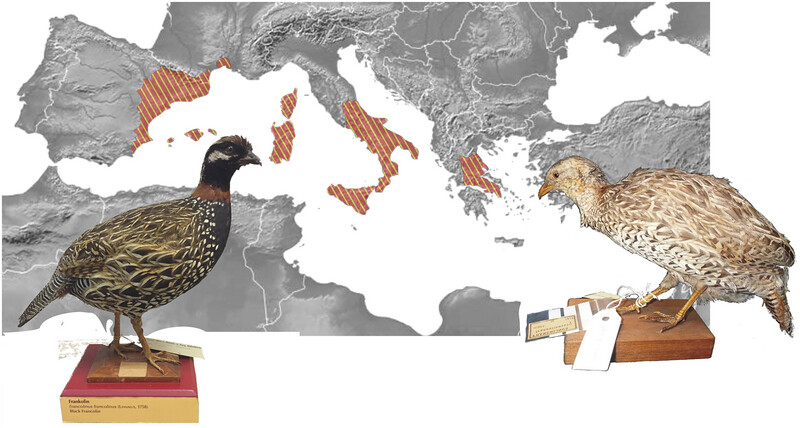
The alleged nativeness of the black francolin to Europe and Africa was ultimately disproved. Black francolin from Greece and Algeria pertain to previously identified genetic groups from either the Near East or the Indian subcontinent. The Crown of Aragon played a major role in the circum-Mediterranean expansion of the black francolin through its Near and Middle Eastern emporia. The trade in black francolins from the Indian subcontinent must have occurred mostly by land through the Silk Road.
Molecular evolution of wound healing-related genes during cetacean secondary aquatic adaptation
- Pages: 898-912
- First Published: 27 October 2023
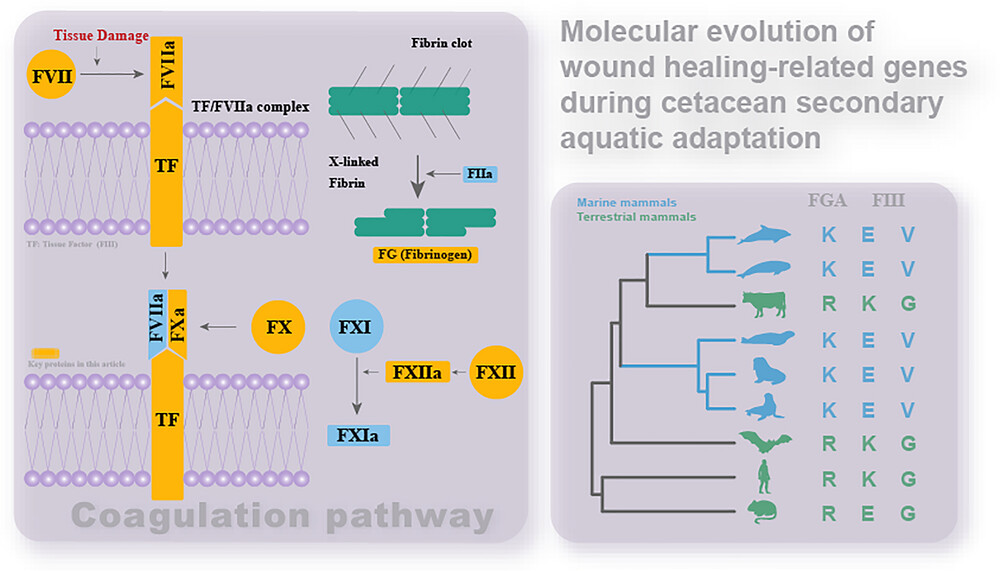
Evolution of wound healing-related genes during cetacean secondary aquatic adaptation. The positive selection and convergent amino acid substitutions on coagulation and other wound healing-related genes contribute to the strong wound-healing ability of cetaceans. All silhouettes are reproduced from FLATICON (https://www.flaticon.com/).
Combining phylogeography and ecological niche modeling to infer the evolutionary history of the Cordoba vesper mouse (Calomys venustus)
- Pages: 913-928
- First Published: 29 January 2024
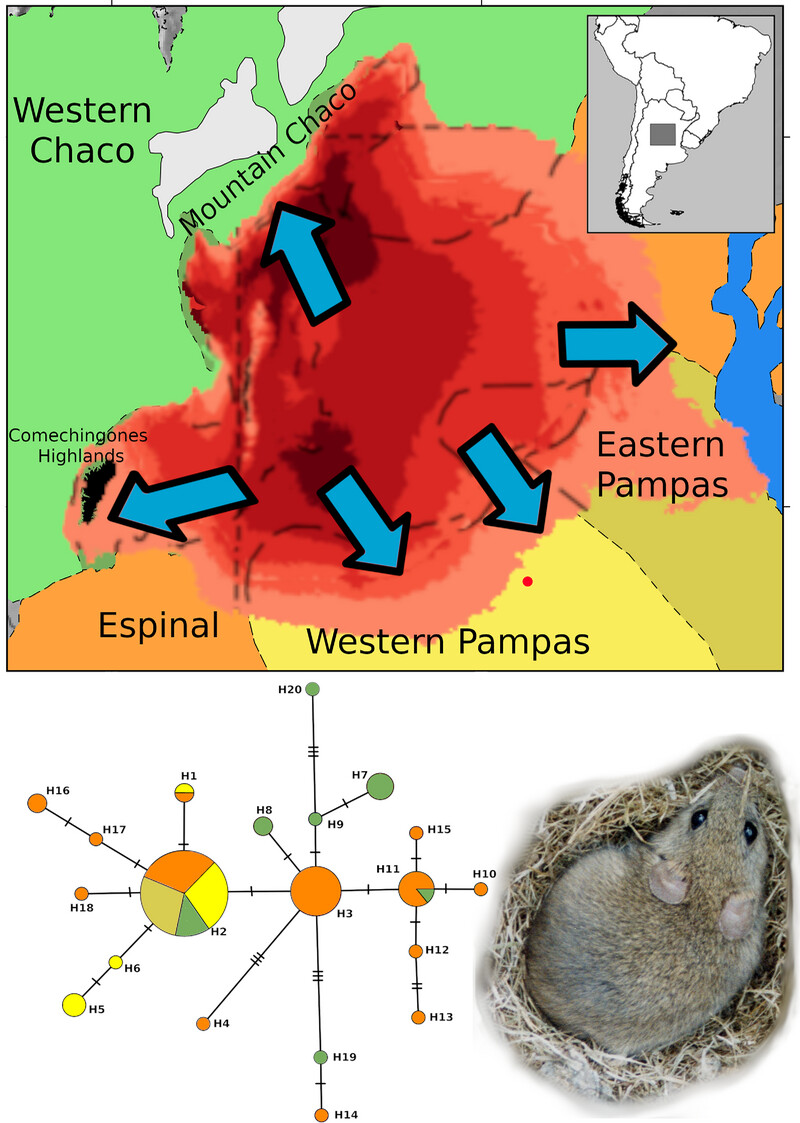
We combined a phylogeographic approach with ecological niche modeling to understand the evolutionary history of Calomys venustus, a rodent of South America. Our results suggest that the Espinal was the area of origin of this species, which expanded demographically and spatially during the Last Glacial period. A close relationship was found between the Espinal and the Mountain Chaco.
The first chromosome-level genome assembly and transcriptome sequencing provide insights into cantharidin production of the blister beetles
- Pages: 929-940
- First Published: 25 October 2023
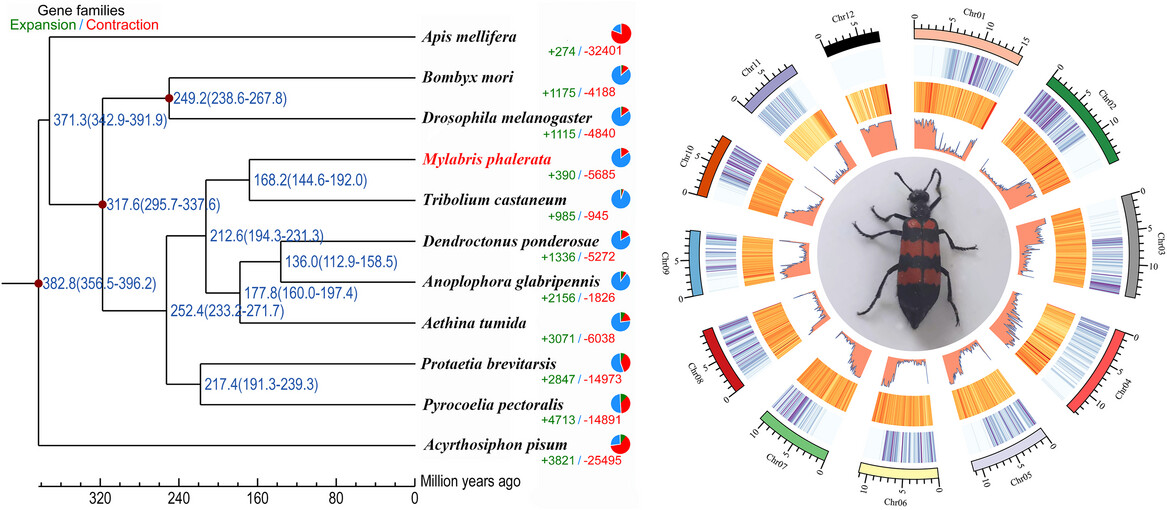
The blister beetles (Coleoptera: Meloidae) could produce a natural defensive toxin of cantharidin, which has been used for various cancer treatments and other diseases. The first chromosome-level genome assembly and transcriptome sequencing can help understand the cantharidin production of the blister beetles.
Morphology of the wings and attachment apparatus in the evolution of the family Hippoboscidae (Diptera)
- Pages: 941-954
- First Published: 30 November 2023

Hippoboscidae flies have a worldwide distribution and are vectors of many dangerous diseases both in mammals and birds. They have unique morphological adaptations, closely related to their ectoparasitic lifestyles, such as wing characteristics and elements of the tarsi-attachment apparatus. These features are of great importance in the evolution of this family.
Single-nucleus transcriptomics and chromatin accessibility analysis of musk gland development in Chinese forest musk deer (Moschus berezovskii)
- Pages: 955-974
- First Published: 21 April 2024
Comparative genomics provides insights into molecular adaptation to hypermetamorphosis and cantharidin metabolism in blister beetles (Coleoptera: Meloidae)
- Pages: 975-988
- First Published: 15 March 2024
LETTER TO THE EDITOR
A molecular phylogeny for all 21 families within Chiroptera (bats)
- Pages: 989-998
- First Published: 18 October 2023
Molecular phylogeography of Hipposideros pratti in China
- Pages: 999-1003
- First Published: 03 October 2023
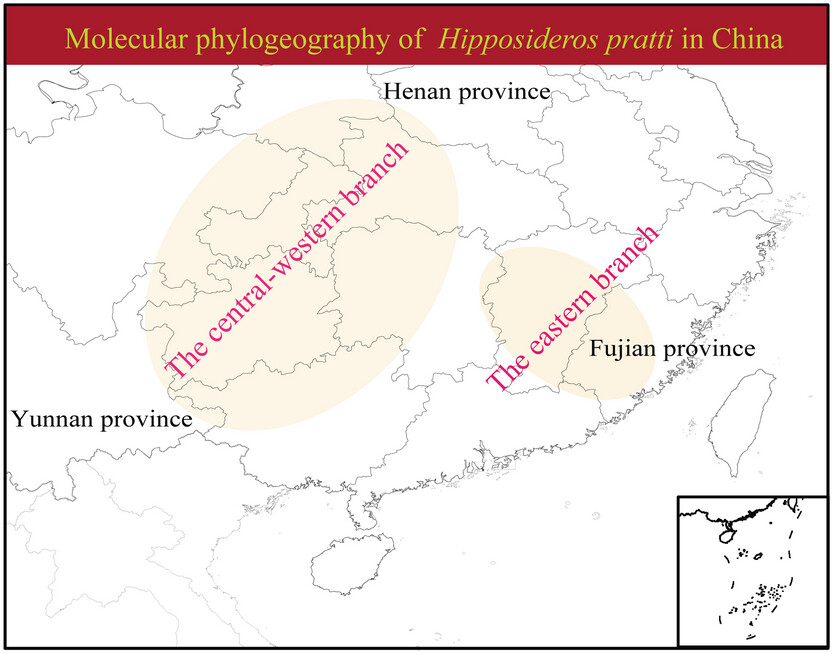
Hipposideros pratti has low genetic diversity and was divided into two clades, the central-western clade and the eastern clade. We did not detect a clear east-to-west dispersal route along the longitudinal direction, and we found that the eastern clade spread outward from one population to another, while the central-western clade spread gradually. The glacial–interglacial period of the Quaternary influenced the migration and dispersal of H. pratti. H. pratti did not experience a significant population increase in the past, and the average population trajectory was decreasing. Given the convenient ecosystem services provided by bats, the preservation of bat populations is particularly critical. Nonetheless, we have discovered that the majority of H. pratti’s distributional sites were not discovered in this study. Based on our results, it is important to apply in situ conservation measures for effective protection as soon as possible.
New genes driven by segmental duplications share a testis-specific expression pattern in the chromosome-level genome assembly of tree sparrow
- Pages: 1004-1008
- First Published: 28 November 2023
COMMENTARY
The debatable notion of “novelty deficiency” in significant conservation domains
- Pages: 1009-1013
- First Published: 16 April 2024

In significant conservation domains, rejecting papers to prioritize novelty, may impede scientific and social progress as these studies carry crucial policy and practical implications. The research's rigor (rather than novelty) should be the primary criterion for evaluating the works’ robustness and suitability for publication. Innovation is essential, but science requires a balanced approach, encompassing both conceptual innovation and practical research.
Mucus provisioning as milk in an amphibian
- Pages: 1014-1016
- First Published: 27 May 2024




